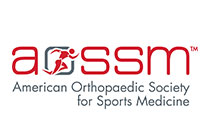
Groin pain can sideline even the most elite athletes, but getting the right diagnosis is often half the battle. What may seem like a straightforward hernia can actually be a more complex issue involving the soft tissues of the lower abdomen and pelvis. Let’s look at why groin injuries are commonly misdiagnosed and how to tell the difference between athletic pubalgia and a true hernia.
The Overlap Between Core Muscle Injuries and Hernias
Core muscle injuries, often called a sports hernia,or athletic pubalgia is a soft tissue injury involving muscles, tendons, or ligaments in the lower abdominal wall and groin area. Despite the name, it is not a true hernia because it doesn’t involve a visible bulge or a defect in the abdominal wall. However, the symptoms, which include groin pain that worsens with activity, limited hip mobility, and discomfort when coughing or sneezing, can mimic an inguinal hernia.
An inguinal hernia, on the other hand, occurs when abdominal contents, typically a portion of the intestine, protrude through a weakness in the inguinal canal. This condition often presents with a noticeable bulge in the groin or scrotum, which may become more pronounced during physical activity or straining. Inguinal hernias can also cause discomfort or a heavy sensation in the groin, but typically lack the deep muscular or tendon-related pain seen with core muscle injuries.
The overlap in symptoms often leads to confusion.Without a proper differential diagnosis that includes consideration of core muscle injuries, the underlying soft tissue injury can go untreated.
Why Misdiagnosis May Occur
Standard imaging studies, such as X-rays or CT scans may not clearly reveal soft tissue injuries associated with core muscle injuries.. Without a thorough evaluation, especially by a specialist experienced in hip and groin preservation, these injuries are easily overlooked. And treating the wrong condition not only delays recovery but can also lead to unnecessary procedures.
When to Suspect Core Muscle Injuries
If your groin pain is persistent, worsens with twisting movements, sprinting, or cutting maneuvers, and hasn’t responded to rest or traditional hernia treatments, core muscle injury may be the culprit. Unlike hernias, there may be no visible bulge, and the pain is often more diffuse or deep-seated.
A specialized orthopedic evaluation, including physical exam, diagnostic ultrasound, and possibly MRI, is critical to distinguishing athletic pubalgia from a true hernia or other causes of groin pain like hip labral tears.
Getting the Right Diagnosis and Treatment
Misdiagnosed groin pain can cost athletes valuable time and performance. Working with a surgeon who specializes in hip and groin preservation ensures a more accurate diagnosis and access to non-surgical and surgical solutions tailored to your condition.
If you're experiencing persistent groin pain and want clarity on your condition, book an appointment with Dr. Bharam for specialized insight and tailored treatment recommendations.
AUTHOR: Srino Bharam, MD, MBA, is a board-certified, fellowship-trained sports medicine orthopedic surgeon and professor of orthopedic surgery specializing in the treatment of athletic injuries of the hip and groin. Dr. Bharam has over 20 years of experience in treating injuries and conditions of the hip to restore athletes and patients to an active lifestyle.












